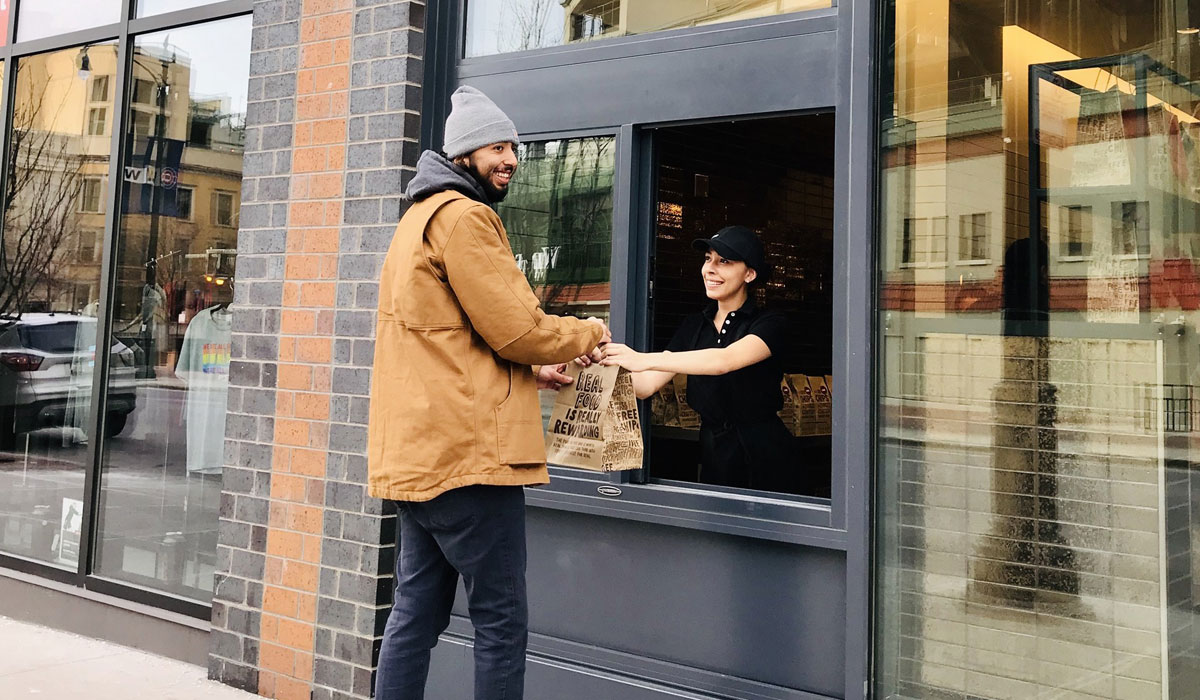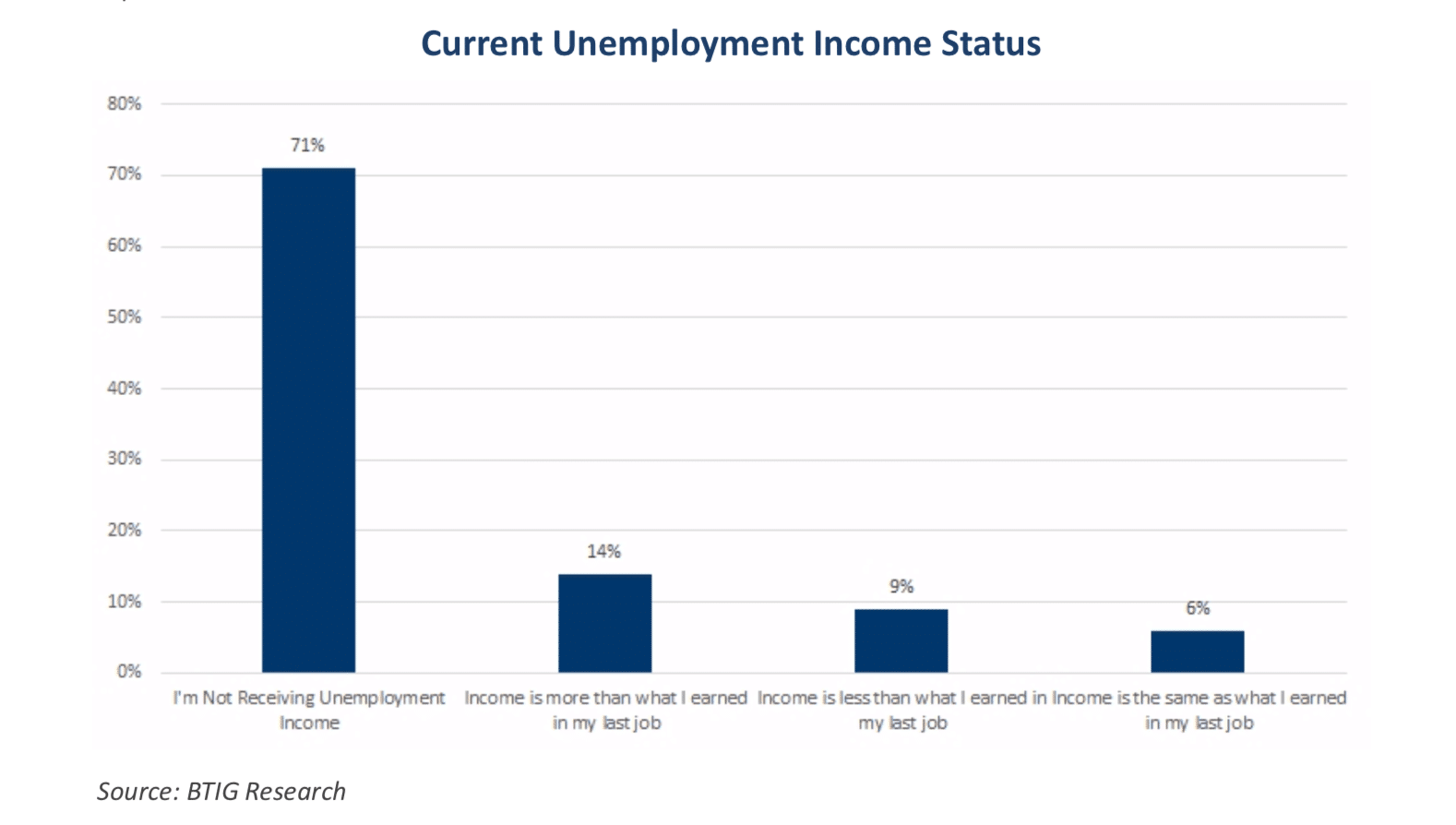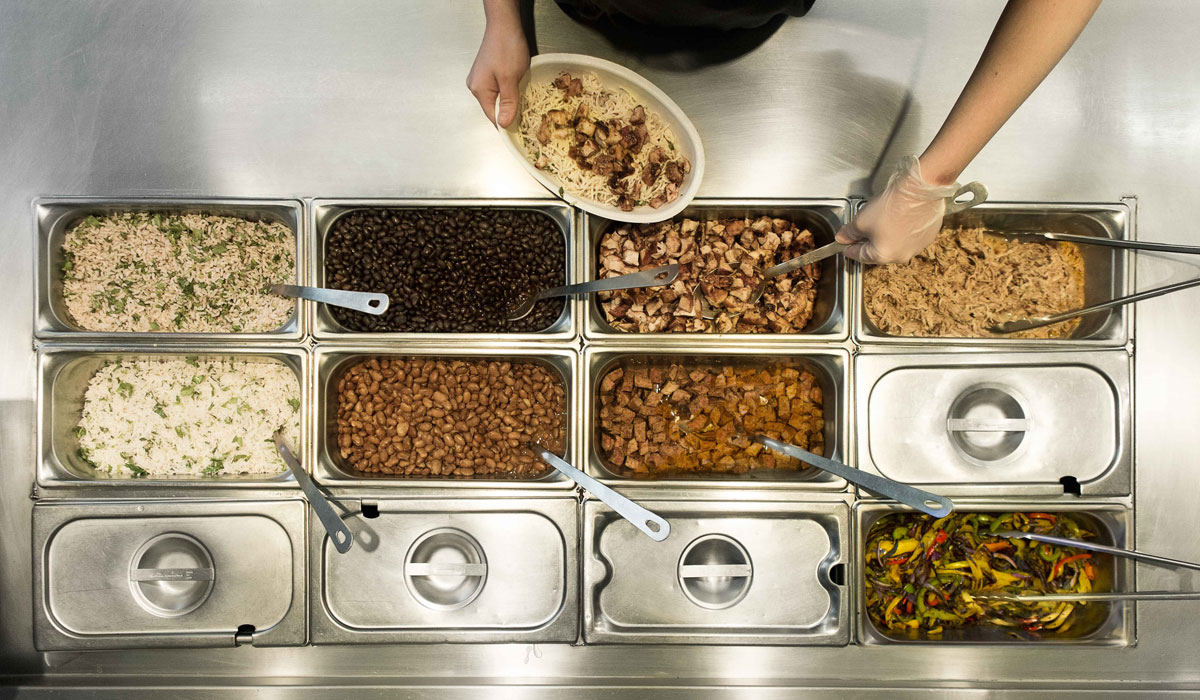Chipotle’s digital order-ahead pickup windows are far from a case study at this point. Of the brand’s 174 openings last year, 81 percent included a “Chipotlane.” The chain began testing the earlier generation in late 2018. Viewed as a precursor to what might become a full-on drive-thru, Chipotle changed course when early pilots showed customers could roll through in as little as 12 seconds. And now, there are north of 350 systemwide—a number that’s ready to balloon in 2022, as more than 80 percent of Chipotle’s projected 235–250 openings are expected to feature one.
The chain claims it was the first national restaurant to launch such a model, where customers tap orders on mobile or digital devices (no menuboard) and drive up to the access point. Without debate, however, it’s hardly the only standing. Chains from Noodles & Company to Sweetgreen followed suit, and the field keeps crowding.
But whatever you do at this stage, don’t call the Chipotlane a “drive-thru,” Tabassum Zalotrawala, Chipotle’s chief development officer says. “I refuse,” she notes. “It is a pickup lane.”
MORE ON CHIPOTLE:
Chipotle’s Focus Turns to Career Advancement for Workers
How Chipotle is Addressing the Industry’s Turnover Crisis
Chipotle is Headed to a Small Town Near You
This is more than just semantics. In recent months, Zalotrawala says it’s been “hard work” explaining to cities, municipalities, and developers why the format should be characterized differently than the classic fast-food staple. And why, in turn, markets should rethink how they view Chipotle either building one or converting existing stores to include it.
Unlike traditional drive-thrus, Chipotlanes don’t include clearance bars, menuboards, or multiple windows as you might see (one to order, another to pick up). “We have none of that,” Zalotrawala says. “Ours is a very clean operation where you’re not going to have any kind of noise pollution that comes with those loud speakerphones at the menuboard.”
There isn’t excessive signage—enter, exit, drive-thru ahead cues—either. Yet most importantly, Zalotrawala says, Chipotlanes don’t jam traffic. Today, the brand clocks transactions through the point at “no more than 30 seconds.” The difference, naturally, being customers paid online and are there only to collect. Chipotlanes boast a stack of about three to four cars. “Versus the 30-car stack that I’m sure you’ve seen at other peers,” she says.
“And sometimes cities have a great point,” Zalotrawala adds. “You don’t want this to become a traffic nuisance within the shopping center, or spill out onto the road. I understand all of that. But I think if it’s done well, if it’s planned properly, it only creates more convenience for your constituents. We’ll keep fighting the good fight.”
This has been a constant line for Chipotle as it readies for growth. In February, CEO Brian Niccol told investors the brand now believes it can operate at least 7,000 stores across North America, up from prior projections of 6,000. Chipotlanes are a big ticket on that path. They produce higher volume than traditional stores—sales as much as 15 percent above—skew toward digital (namely higher-margin takeout versus delivery), and generate cash-on-cash returns in the 65–70 percent range within a couple of years. Chipotlanes unlock the company’s aim to eventually sail $3 million average-unit volumes. In Q4, AUVs were up to $2.641 million from $2.223 million two years ago.

“I think we’re going to continue innovating around these formats with the idea of, or the goal really, of extending access and convenience,” Zalotrawala says.
And they’re also a direct answer to Chipotle’s changing guest. Digital sales represented 41.6 percent of the business last quarter, which amounts to $811 million, of which 20 percent owes to delivery. Chipotle’s full-year 2021 digital sales of $3.4 billion was nearly three-and-half times what it was pre-COVID.
Lastly, the brand has found success opening in “small” markets of about 40,000 or so people. These lend themselves to Chipotlanes, too, and the ability to deliver unit economics at or better than traditional stores, Niccol said. Given lower lease costs, as well as a higher success rate in staffing, the fact there’s no trade-off in volume has opened up the map for Chipotle. Niccol said North America offers “hundreds of these” Chipotle can find and build in, including even smaller areas near or off expressways. Essentially, restaurants not in major metros.
Zalotrawala says Chipotle is taking a “really keen look” at its real estate portfolio as all these dynamics unfold. One, it’s identifying existing locations that can support a Chipotlane and create that access point. Secondly, it’s working to find existing stores that could use a relocation where the brand can tack a Chipotlane on. And thirdly, there’s an overarching new restaurant strategy around ways the company can add a Chipotlane. The fast casual will do about 12 conversions this year.
But to Zalotrawala’s latter outline, the Chipotlane’s success has begun to cascade into other development blueprints. In June, the brand opened a walk-up window at its Gainesville, Florida, University Avenue location. Chipotle tested a walk-up window late 2019 in Chicago.
Zalotrawala says Chipotle viewed the opportunity not unlike how it’s tracking Chipotlanes. “I think the whole idea is conceived from creating more access and convenience for customers,” she says.
Here, the chain began to run into more urban areas where “you absolutely cannot have a vehicular lane,” Zalotrawala says. Or jurisdictions where local authorities won’t green light a drive-thru.
And so, Chipotle devised a Chipotlane for foot traffic. As Zalotrawala calls it, “the human lane.”
Akin to Chipotlanes, customers order ahead. They walk up and show a receipt. There’s even a bell in case an employee is not present at the window. Zalotrawala explains that’s seldom the case.
The Chicago store proved effective, she adds, since guests appreciate the convenience and the in-store queue became less congested.
With the Gainesville store, Chipotle soft-opened its window add-on. There’s a sign inside consumers can see and employees will suggest the option. But, generally, it’s a pretty intuitive feature that doesn’t take a lot to sell, she says. One guest uses it and tells another. Somebody walking in and grabbing off a shelf notices the window and asks about it.
Chipotle does, however, plan to boost awareness by firing off a blast to customers within a 3-mile radius of the restaurant. Those who have the app will receive a notification that it’s live. There will be other “freebies” or marketing-related actions to “create the buzz and have people take note that something new has happened to their existing Chipotle,” Zalotrawala says.
Walk-up windows are, for all intents and purposes, subsets of Chipotlanes. The brand was able to add the Gainesville one without closing the store as well, which Zalotrawala says is a critical driver when looking at this model on a go-forward basis.
The inside feels just like a Chipotlane would. There’s the digital makeline in addition to the front, situated near the walk-up window/Chipotlane area. So crew members can prepare digital orders and hand them out. There’s no cash collected. No point-of-sale. Beverages are set up.
“We’ll really be looking at what happens with the sales, what happens with the transactions, and, honestly, what happens with customer satisfaction,” Zalotrawala says.
Like traditional Chipotlanes (there is a Chipotlane-only unit that opened in Cuyahoga Falls, Ohio), the walk-up window isn’t a swap. There’s still a dining room. Customers can get in line as usual. If they want, they can also go inside and grab from pickup shelves. One reason Chipotle kept those, Zalotrawala says, is for larger orders and catering pickup. “It’s a better place to fit those boxes in,” she says.

Even though Chipotle was able to build the window without pausing operations, it was still a “mammoth task,” Zalotrawala says. Conversions are a unique slice of development since contractors aren’t working day in and out without an active operation. “You’ve got to identify all of the pieces and all of the support functions that get impacted by the construction,” she says.
Also, not all general contractors are suited for conversion projects. “For the plan to really work, you’re doing the remodel in sections to the extent that you may close down a part of the dining room to accommodate your construction crew and the work that they’re doing,” Zalotrawala says. “You may move some of the equipment around in the kitchen and quarter off a part of it to create that window.” And Chipotle tries to create “construction time zones” where crews build during off hours—at night and early mornings.
For the most part, when Chipotle converts to Chipotlanes, it’s a bump out from the existing footprint of the building, which helps the process.
Zalotrawala says Chipotle chose to spread the timeline (two versus one week) in favor of shutting down and reopening with the window. “[That would mean] you lose sales for a week. You lose customers for a week. They change habits very, very quickly because there’s just that many choices out there,” she says. “We choose not to do that for that exact reason. Let’s keep our staff employed. Let’s keep our customers going. Let them keep their habits and work around it.”
As the walk-up window shows, Chipotle will continue to find ways to provide additional access as it expands. In markets where the brand might not have needed another store before, it can now drop a complementary piece to extract additional trade dollars, or support its digital business. In fall 2020, it debuted a digital-only store just outside the gate of the military academy in Highland Falls, New York. Called “Chipotle Digital Kitchen,” the store offers pickup and delivery without a dining room. It’s not a ghost kitchen, however. Customers walk in and order/pickup. It’s not a hub for off-premises fulfillment, either, as much as it’s a reimagined model to get food to guests.
The Chipotlane-only Ohio unit was a conversion of an existing bank. It enables guests and delivery drivers to collect digital orders through the Chipotlane or walk-up window. There’s also a patio for guests to sit and eat. “We didn’t build this from scratch,” Zalotrawala says. “So in many ways it’s a conversion. And it’s a smaller location that identified that in the middle of three extremely high-volume restaurants.”
“I think we’re going to continue innovating around these formats with the idea of, or the goal really, of extending access and convenience,” she adds. “And walk-up window formats is just one other way we do it.”





